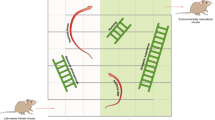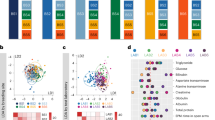Abstract
Genetically modified mice have been an invaluable tool for the study of gene function in an intact biological system. Researchers frequently obtain genetically modified mice from other academic institutions. This form of collaboration between laboratories comes with a unique set of challenges, and a clear set of guidelines for navigating the process has yet to be defined. The author provides suggestions for how to initiate an exchange of animal resources and steps for ensuring a successful collaboration. Both parties should be clear about their expectations. The importing lab should prepare in advance for potential animal health considerations and breeding and colony management strategies prior to importation. The number, gender, age and genotype of the imported animals should be confirmed as soon as possible by the importing lab. It is in the best interest of all parties to be courteous, forthright and thorough when sharing animal resources so that everyone can benefit from the resulting research.
This is a preview of subscription content, access via your institution
Access options
Subscribe to this journal
We are sorry, but there is no personal subscription option available for your country.
Buy this article
- Purchase on Springer Link
- Instant access to full article PDF
Prices may be subject to local taxes which are calculated during checkout
Similar content being viewed by others
References
Newman, M.E. Coauthorship networks and patterns of scientific collaboration. Proc. Natl. Acad. Sci. USA 101 (suppl. 1), 5200–5205 (2004).
Gregory, S.G. et al. A physical map of the mouse genome. Nature 418, 743–750 (2002).
Guan, C., Ye, C., Yang, X. & Gao, J. A review of current large-scale mouse knockout efforts. Genesis 48, 73–85 (2010).
Gordon, J.W., Scangos, G.A., Plotkin, D.J., Barbosa, J.A. & Ruddle, F.H. Genetic transformation of mouse embryos by microinjection of purified DNA. Proc. Natl. Acad. Sci. USA 77, 7380–7384 (1980).
Manis, J.P. Knock out, knock in, knock down—genetically manipulated mice and the Nobel Prize. N. Engl. J. Med. 357, 2426–2429 (2007).
Krimpenfort, P. & Berns, A. Gene transfer into mammalian embryos. Hum. Reprod. 2, 333–339 (1987).
Gama Sosa, M.A., De Gasperi, R. & Elder, G.A. Animal transgenesis: an overview. Brain Struct. Funct. 214, 91–109 (2010).
Ristevski, S. Making better transgenic models: conditional, temporal, and spatial approaches. Mol. Biotechnol. 29, 153–163 (2005).
Narayanan, K. & Chen, Q. Bacterial artificial chromosome mutagenesis using recombineering. J. Biomed. Biotechnol. 2011, 971296 (2011).
Ohtsuka, M., Kimura, M., Tanaka, M. & Inoko, H. Recombinant DNA technologies for construction of precisely designed transgene constructs. Curr. Pharm. Biotechnol. 10, 244–251 (2009).
Porteus, M. Design and testing of zinc finger nucleases for use in mammalian cells. Methods Mol. Biol. 435, 47–61 (2008).
Giraldo, P. & Montoliu, L. Size matters: use of YACs, BACs and PACs in transgenic animals. Transgenic Res. 10, 83–103 (2001).
Cermak, T. et al. Efficient design and assembly of custom TALEN and other TAL effector-based constructs for DNA targeting. Nucleic Acids Res. 39, e82 (2011).
Smalheiser, N.R., Perkins, G.A. & Jones, S. Guidelines for negotiating scientific collaboration. PLoS Biol. 3, e217 (2005).
Du, Y., Xie, W. & Liu, C. Strategies and considerations for distributing and recovering mouse lines. Methods Enzymol. 476, 37–52 (2010).
Mook, D., Taylor, D.K. & Huerkamp, M.J. The rodent quarantine quagmire. J. Am. Assoc. Lab. Anim. Sci. 48, 472–474 (2009).
Schoeb, T.R. & Davis, J.K. Comment on: “Barrier facilities for transgenic rodents in academic centers—a two-edged sword”. Comp. Med. 53, 116–118 (2003).
Gordon, J.W. Barrier facilities for transgenic rodents in academic centers—a two-edged sword. Comp. Med. 52, 397–402 (2002).
Littlefield, N.A., Harmon, J.R. & Campbell, H.M. Barrier animal facility operations for a large-scale chronic study (ED01 study). J. Environ. Pathol. Toxicol. 3, 187–192 (1980).
Mahabir, E., Bauer, B. & Schmidt, J. Rodent and germplasm trafficking: risks of microbial contamination in a high-tech biomedical world. ILAR J. 49, 347–355 (2008).
Weng, D.Y. et al. Promiscuous recombination of LoxP alleles during gametogenesis in cornea Cre driver mice. Mol. Vis. 14, 562–571 (2008).
Whitaker, J. et al. Effects of cage size and enrichment on reproductive performance and behavior in C57BL/6Tac mice. Lab Anim. (NY) 38, 24–34 (2009).
Sanderson, A.E., Multari, H.M., Lohmiller, J.J. & Boutin, S.R. Effect of cage-change frequency on rodent breeding performance. Lab Anim. (NY) 39, 177–182 (2010).
Murray, K.A. & Parker, N.J. Breeding genetically modified rodents: tips for tracking and troubleshooting reproductive performance. Lab Anim. (NY) 34, 36–41 (2005).
Author information
Authors and Affiliations
Corresponding author
Ethics declarations
Competing interests
The author declares no competing financial interests.
Rights and permissions
About this article
Cite this article
Tyson, J. Considerations for importing live genetically modified mice from academic laboratories. Lab Anim 41, 167–170 (2012). https://doi.org/10.1038/laban0612-167
Received:
Accepted:
Issue Date:
DOI: https://doi.org/10.1038/laban0612-167



